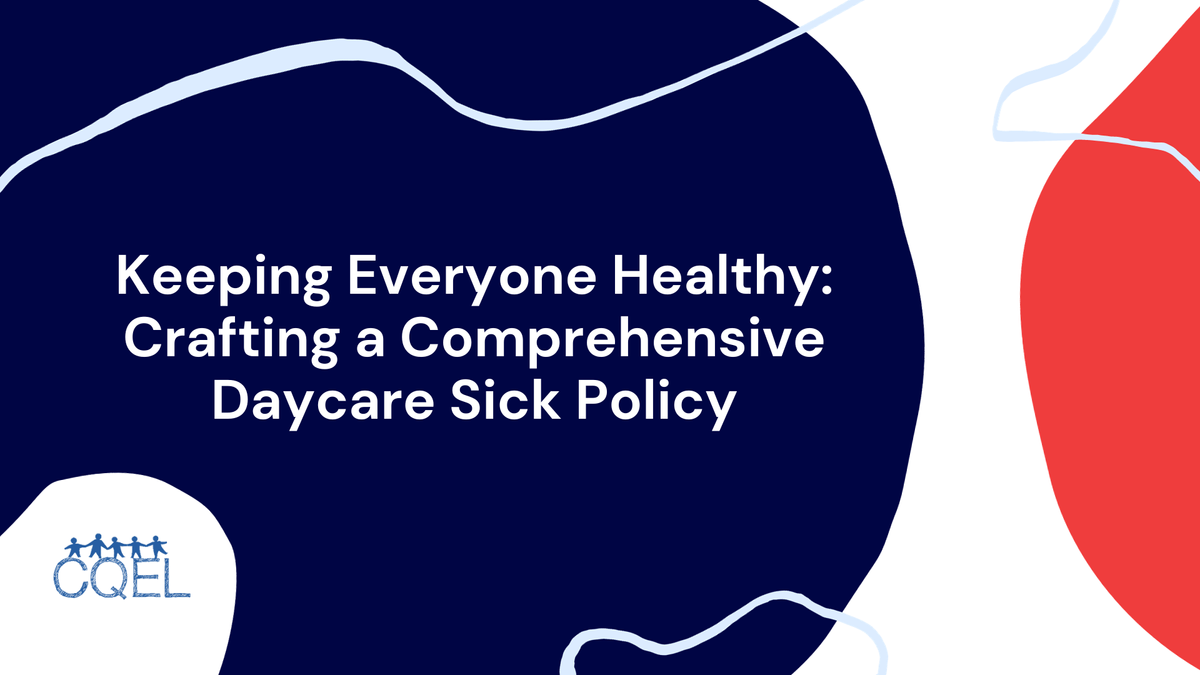Keeping Everyone Healthy: Crafting a Comprehensive Daycare Sick Policy
Embark on a journey of preventative planning, building a sick policy that promotes health, fosters open communication, and keeps everyone feeling safe and cared for.

In the vibrant world of early childhood education, laughter and discovery reign supreme. Yet, lurking beneath the smiles and sunbeams is an ever-present concern: keeping both children and staff healthy. A well-defined sick policy is the compass that guides us through these choppy waters, ensuring the well-being of our littlest explorers and the seamless operation of our program. So, let's embark on a journey of preventative planning, building a sick policy that promotes health, fosters open communication, and keeps everyone feeling safe and cared for.
Setting the Stage: The Key Components of a Stellar Sick Policy:
- Exclusion Criteria: Clearly define the symptoms that necessitate a child's absence, aligning with state regulations and best practices. This might include fever, vomiting, diarrhea, contagious rashes, or excessive coughing. Remember, early intervention is key to preventing outbreaks and protecting the health of our community.
- Notification Procedures: Outline how parents should inform you of their child's illness and anticipated return date. Consider offering multiple communication channels, such as phone calls, emails, or parent portals, for ease and prompt notification.
- Readmission Requirements: Specify the conditions under which a child can return to daycare. This might involve a doctor's clearance or a symptom-free period for a specific duration. Remember, prioritizing everyone's health comes first.
- Staff Sick Leave: Create clear guidelines for staff illness, outlining reporting procedures, leave entitlement, and return-to-work protocols. Ensuring the well-being of our staff also safeguards the well-being of the children entrusted to their care.
Beyond the Basics: Building a Policy that Thrives:
- Transparency and Communication: Share your sick policy clearly and accessibly with all families and staff. Regularly review and update it, reflecting any changes in regulations or best practices. Remember, transparency fosters trust and ensures everyone is on the same page.
- Compassion and Flexibility: While adhering to established guidelines, consider individual circumstances with empathy. Offer support to families navigating illness and explore flexible pick-up or drop-off arrangements when needed. Remember, a caring approach promotes a positive environment for everyone.
- Promoting Preventative Measures: Encourage handwashing, proper hygiene practices, and healthy habits within the program. Consider implementing regular cleaning protocols and providing resources to prevent the spread of common illnesses. Remember, proactive prevention is key to minimizing sick days.
- Collaboration with Families: Work in partnership with families to keep everyone informed about any potential outbreaks or recommended health precautions. Open communication builds trust and strengthens the support network around each child.
Remember: A well-crafted sick policy is not just a set of rules; it's an essential tool for ensuring a healthy and thriving program. By prioritizing well-being, fostering open communication, and demonstrating compassion, we can navigate the inevitable bumps in the road of childhood illness with grace and confidence. Together, let's create a haven where laughter reigns, but where health and safety are the cornerstones of every joyful adventure.
Bonus Tips:
- Consider offering resources to families on common childhood illnesses and preventative measures.
- Encourage staff to get vaccinated in accordance with recommended guidelines.
- Regularly review and update your sick policy based on emerging public health recommendations.
Additional Resource:
- Centers for Disease Control and Prevention (CDC): https://www.cdc.gov/coronavirus/2019-ncov/community/schools-childcare/index.html
